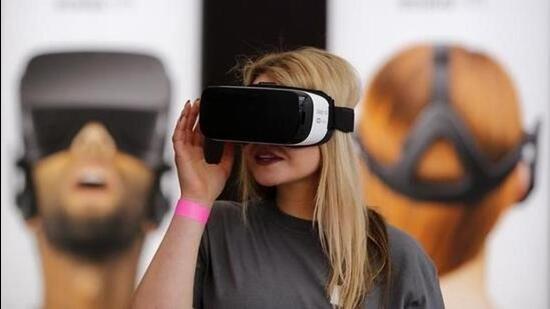The logistics of Mixed Reality
There’s Virtual Reality. There’s Augmented Reality. And there’s Mixed Reality. In the complex world we live in, to get the best of everything, why we must ensure these different realities align with each other
Technology is leading to different realities and all of it is converging in the world we live in. And it makes perfect business sense to dabble with it—the logistics business is a case in point. But before we do a deeper dive into that, a short primer on the realities and why it matters is important.

Imagine putting on a pair of glasses and entering a new world. Now you can look around and see everything there. Why does this matter? You’re building a house ground up and want to create a room that is uniquely yours. Just how exactly ought this house be and what will the room that is only in your head finally look like? As things are, the drawings are with the architects and designers and there’s a blueprint to make it all happen. But with these glasses on, you can actually see what will it finally look like. The guess work gets taken out. That’s Virtual Reality (VR) for you.
Now, imagine wearing glasses in the room you are in. That sofa in your living room needs new upholstery. Will it look better in blue or red? Without having to guess, you can wear these glasses to figure out what looks better on the sofa. This is Augmented Reality (AR).
And finally, there’s Mixed Reality (MR). You’re at work to create a house that doesn’t exist yet. And you need to put that sofa of yours there. What will look better in the new scheme? Blue or red? This is where VR and AR meet and you get MR.
How much this matters now makes itself apparent when in conversation with a war veteran from the logistics business in India. In the complex world he lives in, to get the best of everything, he must ensure these different realities align with each other. In their lingo, it is called “Solution Design”. He did not want to be named because his company is going through a sensitive transition.
What happens when he designs warehouses for large companies such as Amazon or Flipkart to make it more efficient? Work begins with a lot of ‘paperwork’ (read data) that contains details of the numbers of people, machines used, what’s coming into it, what goes out, until every little activity is mapped.
His team then deploys or subtracts people, machines and all else into the systems to see how to make it more efficient. They keep tinkering until the last of bit of efficiency is squeezed out. This is AR in the real world. Another example he shares is that of how his team piloted a project to in the retail business. As things are, at check-out counters, a clerk uses bar-code scanners with one hand. In the experiment, new scanners were created that sat on their wrists. This design change overnight allowed clerks to use both their hands and productivity went up 40%.
But this said, his experience has it that most Indian clients come in with requests to build something ground up. Consider FastTag stickers at toll booths. When it was rolled out, most people were skeptical. I must admit to being among them when Sharad Sharma of iSpirit and part of the team at work on FastTag first shared the idea back in 2017. He showed in much detail the time fuel truckers lose when they wait at toll plazas. He argued that when implemented, it will slash waiting times, and with that hundreds of thousands of liters of fuel will be saved.
The second outcome of this technology could be piloted on MR technology, the logistics veteran explained. He drives a car with a telematics dashboard. After every ride is done, it offers him feedback on how many times he braked hard, the turns he took that were bad, places where he drove at sub-optimal gears, similar other feedback.
In his business, this is technology that can be used to sift good drivers from the not-so-good ones. And for a fleet operator, the difference in each driver’s style can cost them a few thousand liters of fuel per trip each year. He piloted a project on this as well and the difference was there for all to see.
Such changes are only the tip of the iceberg. The intersection of these worlds is disrupting other industries as well that include education, medicine, retail, manufacturing and aviation to name just a few. What business are you in? Are you being disrupted? Are you whining? Or have you embraced the change?
Stay updated with all the Breaking News and Latest News from Mumbai. Click here for comprehensive coverage of top Cities including Bengaluru, Delhi, Hyderabad, and more across India along with Stay informed on the latest happenings in World News.
Stay updated with all the Breaking News and Latest News from Mumbai. Click here for comprehensive coverage of top Cities including Bengaluru, Delhi, Hyderabad, and more across India along with Stay informed on the latest happenings in World News.






